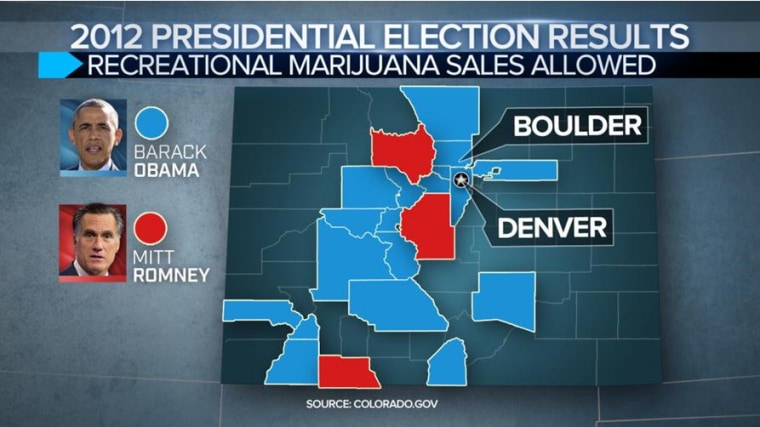For marijuana legalization advocates April 20th, or 4-20 as it is known, is something of a holiday that is usually marked with a celebratory toke or two. And the pro-legalization crowd has a lot to celebrate on Monday.
Laws regarding the drug have been rolled back in states around the country and marijuana legalization is now supported by a small majority of Americans. The marijuana battle is still ongoing, however, even in states where it is already legalized.
Currently 23 states and the District of Columbia have loosened laws regarding the sale and consumption of marijuana – be it for medical or recreational use of the drug. Some of the biggest wins for legalization have come in the past few years, including in Colorado where recreational marijuana sales have been legal for more than a year now.
But the picture is more complicated than that, particularly at the local level. Zoom in on the Rocky Mountain State and from county-to-county the rules regarding pot are quite different.
Only 21 of the state’s 64 counties currently allow new vendors to open up shop and sell marijuana recreationally. Others have banned such sales entirely, established temporary moratoriums or are allowing only medical marijuana dispensaries to sell, according to data from the state of Colorado website.
And when you compare that map to the 2012 election results a clear pattern emerges. Of the 21 counties allowing recreational sales, 18 voted for President Barack Obama.

So, yes, the rules regarding those green plants are strongly colored by the red/blue divide in Colorado. And the fight is evident on more than just maps. A year into Colorado’s grand experiment, supporters and critics have taken to debating whether the state is at the vanguard of a new movement or has made a critical misstep on drug policy.
Last week, in Colorado Springs, AM radio station 1580 changed its format from all-sports to all-pot, celebrating the stoner’s lifestyle. In the same city, the editorial desk of the local newspaper, the Gazette, published a lengthy series exploring what it saw as the largely negative impacts of the law.
Many of the law’s real impacts – from increases in usage to related effects on crime and social services – will likely take a long time to sort through. One year is a small sample size for a complicated issue.
Opponents have seized on one easily quantifiable measure as a sign of the law’s problems: lower-than expected tax revenues. And the numbers suggest they may have a point.
In February of 2014, Colorado Gov. John Hickenlooper’s, D, office estimated that overall marijuana tax and fee revenues would come in at more than $130 million in the law’s first fiscal year. The actual figures were far below that, with tax revenues of about $30 million. But even a concrete measure like dollars is fuzzy when it comes to Colorado’s new law.
The recreational marijuana game is just getting going in the state and future tax estimates show that figure growing quickly to more than $94 million in 2016. In fact, comparing figures from February 2014 and February 2015, Colorado’s marijuana taxes, licenses and fees were up more than 122% – from just over $4 million in 2014 to more than $9 million in 2015.
A lot of that growth has to do with new recreational “retail stores” taking time to get licensed and open in 2014, but if those numbers hold – or grow – they could mean revenues will be higher than many estimates suggest.
The point? At the national level, marijuana legalization is gaining momentum, but the fight is still very engaged, very political and very much undecided, particularly at the local level.